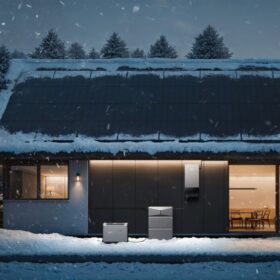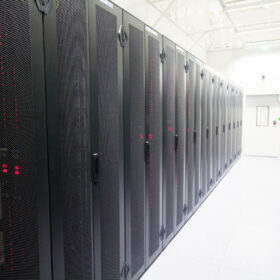pv magazine checked in with Barry Cinnamon, a Silicon Valley solar installer with a 20-year track record, and let him pontificate on solar and storage. (Cinnamon is also a storied solar entrepreneur, podcaster and annoyingly competent writer.)
Cinnamon Energy Systems started in 2001 with the founding of Akeena Solar, a solar installer with thousands of customers in California, New Jersey and New York in the earlier days of home solar ownership. There were adventures with Westinghouse and racking systems.
The name change to Cinnamon Energy Systems heralded the importance of energy storage in the residential power portfolio.
pv magazine: As a recent returnee to the solar industry, I asked Cinnamon what had been going on in the last two years other than ITC and tariff struggles. (interview edited for clarity)
Barry Cinnamon: That’s not going to change. It’s the solar coaster.
When I look back over almost 20 years of doing this, and 20 years before that in the thermal business — we managed to deal with the things that you can expect, but it’s the black swan events, like changes in administration or tariffs that kind of hit you.
As we start doing commercial business, we look at this industry as being analogous to the HVAC industry 50 years ago — it’s going to evolve towards a maintenance industry. It’s new equipment and maintenance, that’s what we’re doing here.
pv magazine: The residential solar industry in the U.S. is on a growth spurt. What does that translate to in your business? Is utility reliability pushing people to storage?
I kind of compliment PG&E because they’re our best marketing department when it comes to battery storage. Now the challenge is there’s a very limited number of battery storage systems that are going to meet the reliability threshold.
One change is in the learning curve, if you look at the product innovation curve, we’re past the early adopters, we’re into the majority, people are saying, “I’ve seen my neighbors put solar on and I’m finally going to do it.”
pv magazine: What’s unique to Silicon Valley for a solar installer?
Barry Cinnamon: What’s becoming a challenge surprisingly is not the panel prices, I mean those are going to come down again, but kind of every cost of doing business for us has gone up. The biggest challenge, here in Silicon Valley, finding really well trained, qualified, solar and electricians. And we train them, but you’ve got to pay them a lot of money and that means we’ve got to raise our prices.
The tariffs on aluminum and steel on any imports have meant that the domestic equipment has gone up, so the racking has gone up. The tariffs on electronics means that the inverters, optimizers and microinverters have kind of gone up. And the cost of living keeps going up.
pv magazine: In an article you wrote for GTM, you suggested energy storage would best focus on serving critical loads. Home owners shouldn’t expect to be powering two beer fridges in the garage, their swimming pool heater, the lights and everything else in their home?
Barry Cinnamon: They can power the beer fridges because those use little motors, but they can’t power the pool pump; they can’t power the air conditioner; they can’t power their electric stove. If they do, the power draw of those units is going to be so high that the inverter will simply not start up.
That’s the surge issue — the inverters can handle 25 or 30 amps but when you fire up a motor, it’s going to pull 50 amps initially and then the inverter says, “That’s too much. I’m going to shut down.”
The second issue is just the amount of energy you have in your battery. In order to get the SGIP rebates, you’re supposed to cycle that battery almost every day. The power goes out in the evening when the battery might be down to 20% or 30% and if you have a 10 kwh battery that’s two or three kilowatt hours of energy, that’s going to get you through to the next morning based on your critical loads. But if you run your heating system or your air conditioner, anything big, run your pool pumps, it’s going to be gone.
In general, I’m very encouraged by the growth of the market and by PG&E’s marketing efforts for storage and downright incompetence when it comes to a reliable grid.
(Part two of the interview will publish on Monday.)
This content is protected by copyright and may not be reused. If you want to cooperate with us and would like to reuse some of our content, please contact: editors@pv-magazine.com.








Great comments by somebody who has been in the business for a while. I do have a couple of suggestions. First is using a super capacitor for the start up surge in most of the devices that create this kind of high power Demand upon start up. I think most of these devices usually require this type of power for no more than 30 seconds, then after that going to the typical maintenance mode.
The super capacitor could be rapidly recharged with flow batteries, and of course the flow batteries would be charged by A few extra solar panels. Notice I said extra solar panels because the intent of this whole exercise is to be free from the grid.
Of course the switching would be an issue, But the technology already exist to switch from the batteries to the super capacitor when it senses a high demand.
Yeah, the “solar coaster” of policy and politics pushing back and forth in their own “power struggle”. All the while the ratepayers are being stuck with the electric rate “merry-go-round”. The merry-go-round happens if you adopt solar PV or not. The utility like PG&E for example says, if “you” don’t start using less energy, we will have to build a new power plant and that will increase your electricity rates. So, YOU do things like install all LED light bulbs in your home, buy energy star appliances to replace old appliances and your electric bill goes down, for a while. Then PG&E cries to the CPUC that they are not selling as much electricity as they used to so PG&E (needs) an electric rate increase to off set their “lost revenues” of less electricity sells per month. The whole merry-go-round is biased towards the electric utility and against the ratepayer. How is it does one want to “express” this exasperation of usury? An electric rate merry-go-round? A twilight zone continuous prostate exam? Getting jerked around like a big dumb dog on a short leash? Somewhere in there ROI becomes the joke on us all and falls away during the supposed necessity of a PSPS and sooner or later higher electric rates.
I am a former public school teacher in massachusetts. I am interested in being trained to work in the PV installation and maintenance industry. I previously held a building construction supervisors license and a 3rd class engineers license. I think that I could be a valuable asset to any company in this dynamic industry. I already have a truck, ladders and most of the necessary tools for this work.
This article is encouraging me to consider working in this industry. It seems like the main point of the article is to explain the future potential for secure jobs in the pv industry. It would have been great if the writer had included some advice for people like me who have some related experience but need industry specific training.
So, my question is does anyone know of training opportunities in the Massachusetts or Rhode Island areas? I can be contacted directly at lawrencepryor7@gmail.com
It’s great to learn so many things about PV installation and maintenance from a pro person who is already in the industry and have a good experience with the same. Thanks for sharing this with us. Great post!!